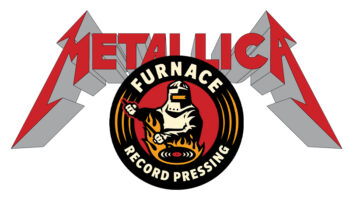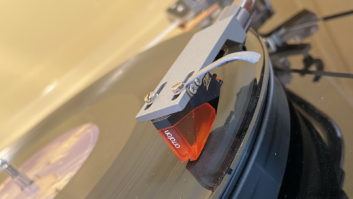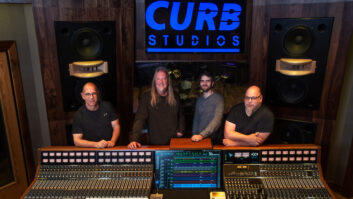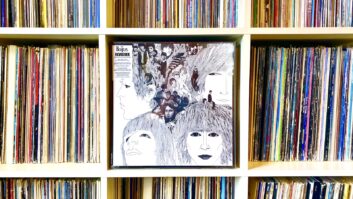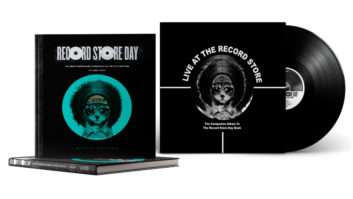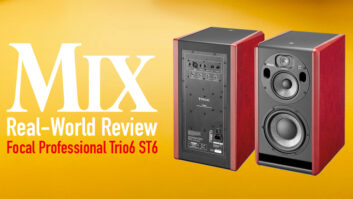LOS ANGELES, CA—Vinyl records have been enjoying a surge in popularity of late, with Nielsen SoundScan counting 2.8 million units sold in 2010, the highest number since it began tracking in 1991. To help small artists and labels understand just what is involved in releasing a vinyl record, the Grammy Museum in downtown Los Angeles recently hosted “From Vision to Vinyl: A Step-by-Step Look at Album Production.”
Vinyl may still be only a tiny fraction of total sales—about one percent, in fact—but it has been undergoing an impressive resurgence recently. Back in 2006, a total of 858,000 units were sold; sales have been increasing steadily by approximately 15 percent annually ever since. But in May 2011, Nielsen reported that sales were already 37 percent up on the same time last year.
Panel moderator Neil Schield, owner of a vinyl-only record store and label, Origami Vinyl, noted the attraction of the format: “A lot of the kids that come into the store don’t have record players, but they want the tangible good—and they want the download so they can listen to the music. It’s a collector’s piece for them.”
So what would it cost to release, for example, 500 copies of a record on black vinyl with a standard jacket, asked Schield. A quick round-robin of the panel, comprising Peanut Butter Wolf, a DJ, producer and owner of cult hiphop label Stones Throw Records; Pete Lyman, owner of Infrasonic Sound, a studio/mastering suite; Kevin Smith, owner of the Bill Smith Custom Records pressing plant; and Jennifer Freund, CEO of Dorado Pkg, which specializes in record packaging, yielded a nice round figure: $3,000, on top of recording and production costs.
Schield cautioned artists and labels to keep their expectations realistic. His best-selling release, by Beach House, sold about 75 copies in the store over the course of the year. While there are approximately 500 stores selling vinyl nationwide, he added, similar sales are unlikely everywhere. But, he also reported, “Bands are telling us that when they’re on tour, that vinyl is now half of their sales.”
The efficacy of vinyl as a marketing tool is undeniable. One of the latest indie bands to emerge from L.A., Best Coast, released four 7-inch singles on four separate labels, building sufficient buzz for its lo-fi sound to earn them guest slots on some of the late-night TV talk shows.
“I star ted to sweat—for a day!” laughed Smith, recalling the introduction of the CD in the early 1980s. Bill Smith Custom Records, in business for 50 years, has survived by catering to small bands that order only small runs, he said. “I’d rather they come in and ask us to press 100 or 300 and next week come in and ask for another 100 or 300 more. We don’t force people into larger quantities.”
Part of the attraction of vinyl is certainly its marketing appeal. In addition to the larger canvas for artwork and text provided by an album jacket compared to a CD jewel case, the vinyl itself can take a variety of forms, in terms of sizes, shapes and colors.
Some of those novelty formats affect the quality, as any collector will attest. And as Lyman observed, there are even limits when mastering for a standard vinyl release. “If you want great audio quality, stick to 15 minutes; 18 to 20 is tolerable.” Longer than that, he said, and he has to cut a quieter groove, which makes the noise floor more apparent.
There was considerable discussion on the relative merits of analog versus digital in the mastering process. As Lyman reported, “These days, 95 percent of the time we’re dealing with highres digital files,” although tape is not unusual. Indeed, he revealed, “I’ve [mastered] from every source—cassette tapes, DAT tapes, other records, mp3s.”
But ultimately quality is secondary, he considered: “A good song is a good song. A lot of my favorite records sound like garbage, but the songs are so good that it doesn’t matter.”
For bands on a budget, Lyman said, he can provide a single master that will work for both vinyl and CD release. “With the way my system is set up, I’m able to provide a more dynamic high-resolution master that we can use to cut the vinyl from, and give them a master that’s a little louder for digital sources.”
As for whether analog or digital masters sound better when cut to vinyl, Lyman noted, “There are a lot of other things that impart the characteristics that everybody associate with vinyl. A lot of it has to do with the cutting electronics in the system and the way the Neumann cutting head focuses the audio. I think that’s a big part of the way records sound.”
Infrasonic Sound
infrasonicsound.com
Bill Smith Custom Records
billsmithcustomrecords.com
Dorado Pkg
doradopkg.com
